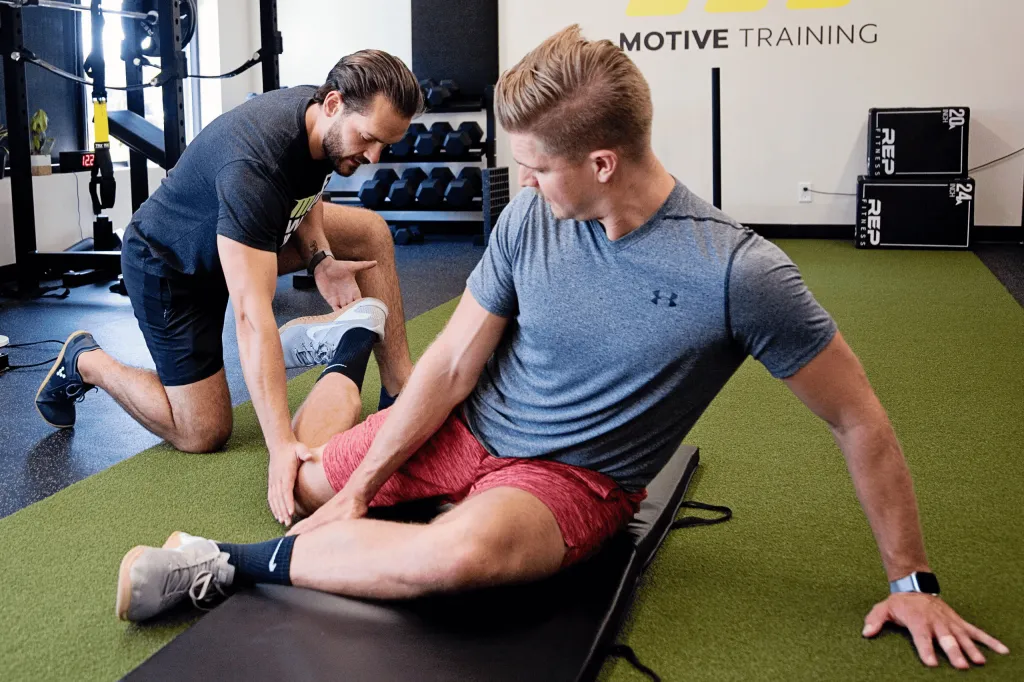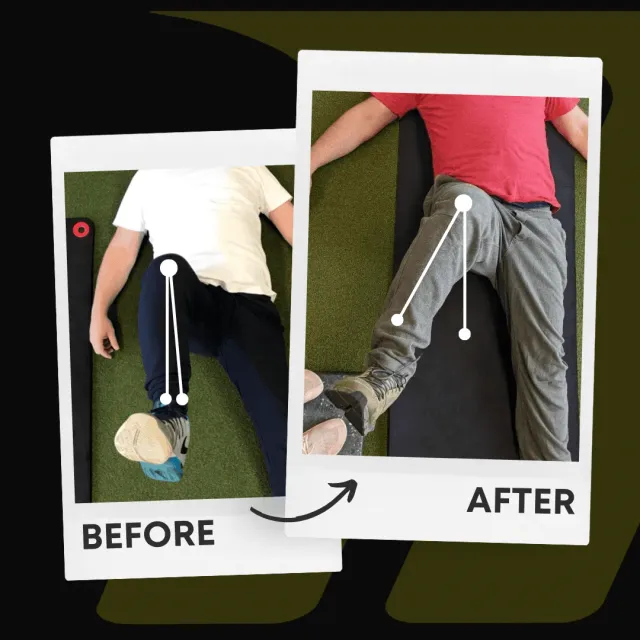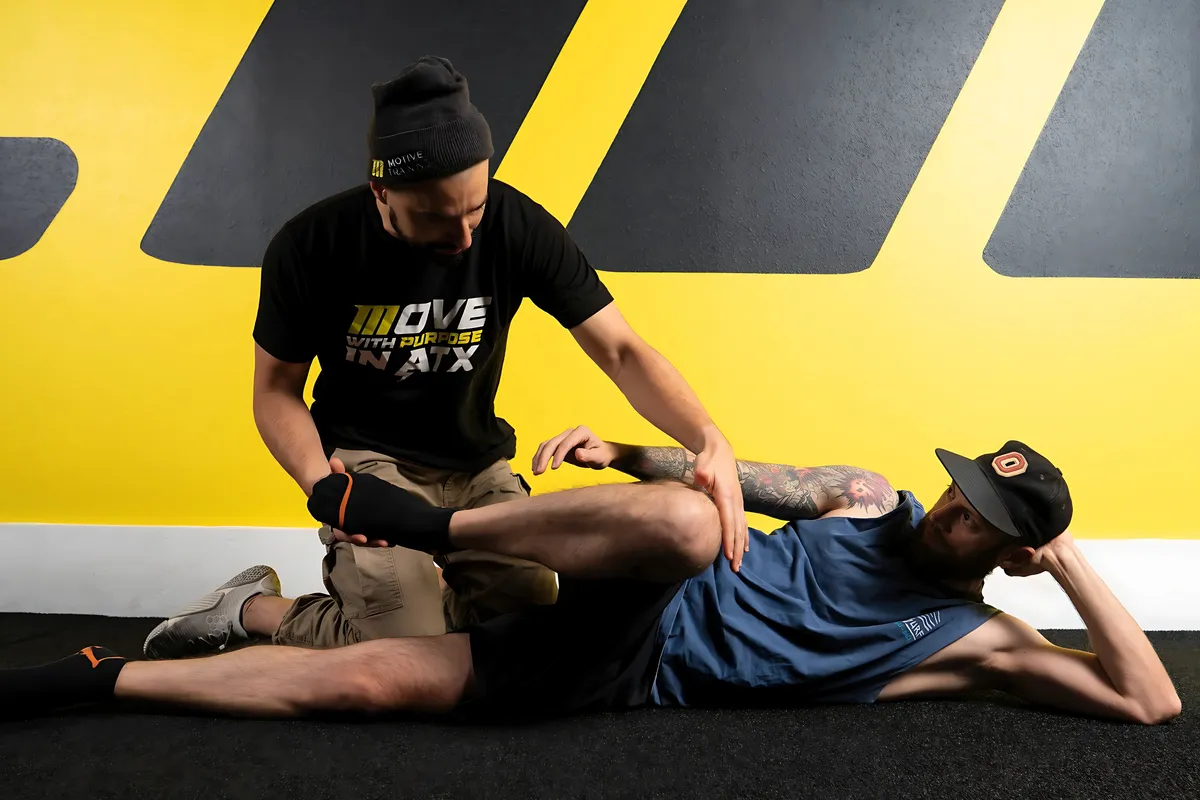Video: Stop Following This Hip Mobility Trend - Motive Training
March 22, 2022 | Functional Range Conditioning

If there’s one hip mobility drill I see on the internet more than anything, it’s the 90/90, windshield wiper, drill/exercise/thing.
You sit on your butt, put your knees in 90-degree angles, and then move them side to side to “open up the hips.” Then, depending on the goal, you can train (mobilize) the hips or sit in long-duration stretches.
And I have no issues with this exercise or any for that matter, but I have a problem with context.
Many people attempting this exercise will lack the prerequisite hip mobility to get into the proper positions. So, they will inevitably not get the results they are after. What’s worse is they might run into actual pain from trying to crank their joints into places they shouldn’t be going.
Why the 90/90 position?
Coaches and trainers use the 90/90 position for the hips because it puts you in an excellent place to train and mobilize the capsule (i.e., the tissues surrounding the deepest layer of the joint). Since you can target the deepest layers of tissue possible, it allows for more impactful stretching and training outcomes. It also allows you to target multiple planes or lines of tissue at one time.
In essence, capsule-based stretching and training give you more bang for your buck, so we highly recommend it.
Today’s video discusses the 90/90 position and gives you prerequisite drills to see how well-suited you are for the 90/90 position work.
Major Takeaways:
- Understand that by hips we mean the femur being able to rotate and move around within the space inside the pelvis. We are not trying to get more pelvic movement during hip training unless that is the goal. Thus, anytime you feel tension above or around the pelvis (e.g., the lower back), you know you’re no longer working the intended tissue.
- Working strict internal and external rotation at the same time is hard, especially from the 90/90 position. Focus on finding good internal and external rotation in the hips without getting the knees or pelvis involved. We covered the bear sit hinge in the video above, but this video showcases the bear sit hinge on its own.
- If you’re going after capsule stretches, you’re better off targeting one joint at a time versus two at once. You can see how we break down the 90/90 position into two stretches in the videos below.
If you need to do capsule-based stretching or training, we recommend working with someone with hands-on experience teaching and cueing it. Otherwise, it can be challenging to navigate on your own.
We’re here to help—virtually or in-person in Austin, TX— get the most out of your body and training program. So don’t hesitate to reach out if you have questions or if we can help. That’s what we’re here for.
Until next time.
Written by

Motive Training Staff
We’ll teach you how to move with purpose so you can lead a healthy, strong, and pain-free life. Our headquarters are in Austin, TX, but you can work with us online by signing up for KINSTRETCH Online or digging deep into one of our Motive Mobility Blueprints.

